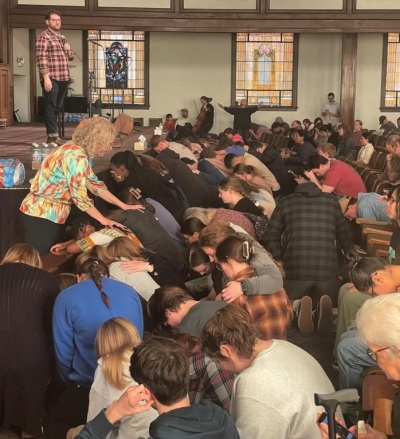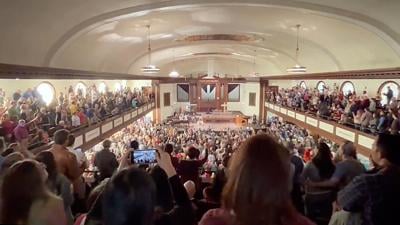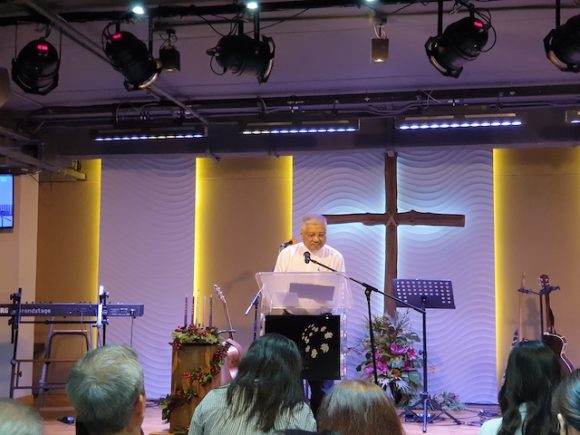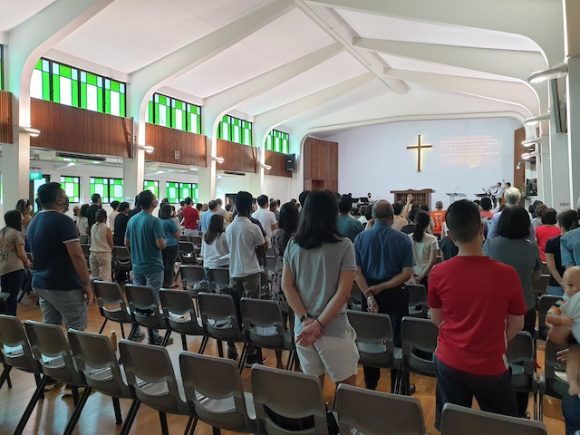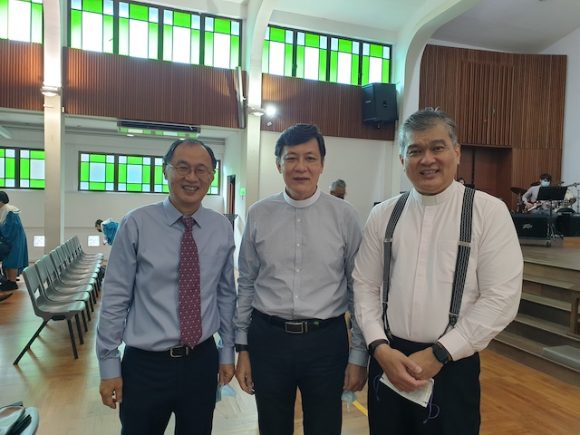The world of fashion is estimated to have lost US$2 to 3 trillion a year to counterfeiters of their branded products, usually fashion and luxury goods like clothing, shoes, watches and leather items. I wonder how much is lost in the kingdom when there are counterfeit or fake preachers in the pulpit. Probably, it can never be quantified. There were false prophets in the Old Testament, wolves in sheep clothing in the New Testament and they are not absent from Christendom today. Authenticity in preachers is super important for effective communication.
Authentic preaching changes lives
Effective sermons are forged in the furnace of authenticity. Authenticity in preaching is power-packed, not in a spectacular flourish, but in a quiet way. There is no lightning or thunder, no fire nor earthquake, but the Spirit’s work in connecting the speaker with the hearer and penetrating their hearts with the unvarnished truth.
Authentic preaching facilitates a connection with the hearers and engages them. Such sermons seem to come from the heart of someone who seeks to practice the truth in everyday life, even though the preacher is far from perfect. With the qualities of openness and transparency, such sermons make the preacher relatable to ordinary people with common struggles. There is a bond of trust as the congregation senses that the preacher is for real and not wearing a mask.
If the preacher is also their pastor it is even better because he or she cannot escape scrutiny and the church grapevine, and if what they hear from the pulpit is congruent with what they see in the life of the pastor, that word has tremendous power to inspire changes in values and beliefs and upload new operating systems in people’s lives. The reverse is also true: inconsistency or incongruence between what is preached and what is practised cannot be hidden and will undermine the credibility and power of the message.
An authentic preacher is someone with the qualities of being genuine, true to oneself and not pretending to be something other than what one is, and living a life that seeks to be congruent to the values, beliefs, and convictions one holds dear and proclaims. There is honesty, integrity, and transparency present in the authentic preacher and this potent mix inspires trust and accelerates personal connections with others.
Jesus and Paul on authenticity
Are there scriptures that highlight the importance of authenticity in life and preaching? Take a look at a few of them below:
“Then Jesus said to the crowds and his disciples: ‘The teachers of the law and the Pharisee sit in Moses’ seat. So you must be careful to do everything they tell you. But do not do what they do, for they do not practice what they preach ‘”. (Matt 23:1-3) The people feared the teachers of the law and Pharisees because they wielded religious power, but were despised because they did not practice what they preached. Jesus saw through their masks of hypocrisy and exposed their deceit. St Paul warned the church in Corinth of the fakery of the so-called apostles who had fooled them. He underlined the importance of integrity in apostleship and ministry: “Rather, we have renounced secret and shameful ways: we do not use deception, nor do we distort the word of God. On the contrary, by setting forth the truth plainly we commend ourselves to everyone’s conscience in the sight of God” (2 Cor 4:2). St Paul claimed the high moral ground in both the character of the messenger and the substance of the message. In his letter to Titus, he enjoined authenticity in leadership and preaching: “In everything set them an example by doing what is good. In your teaching show integrity, seriousness, and soundness of speech that cannot be condemned, so that those who oppose you may be ashamed because they have nothing bad to say about us”(Titus 2:7-8).
One of my favourite books on preaching is John Stott’s “Between Two Worlds” and in this concise gem he wrote: “Communication is by symbol as well as speech. For ‘a man cannot only preach, he must also live. And the life that he lives, with all its little peculiarities, is one of two things: either it emasculates his preaching or it gives it flesh and blood'(John here quotes J.H. Bavinck). We cannot hide what we are. Indeed, what we are speaks as plainly as what we say. When these two voices blend, the impact of the message is doubled. But when they contradict each other, the positive witness of the one is negated by the other. This was the case of the man Spurgeon describes as a good preacher but a bad Christian: he ‘preached so well and lived so badly, that when he was in the pulpit everybody said he ought never to come out again, and when he was out of it they all declared he never ought to enter it again.” (John quotes from Spurgeon’s book) It is at this point that a practical problem presents itself to us. Pastors are told to be models of Christian maturity.”
The how of authentic preaching
How then can one preach with authenticity? First, the preacher has to engage with the Bible He has to cultivate a life of prayerful, systematic study and meditation of God’s word. He approaches the Bible with an openness that allows the truths of God’s word to penetrate his mind and heart. He allows the Word to affect his thinking, affection, and action. Little by little he incorporates truth into his lifestyle and it becomes the dominant operating system of his life. One verse that inspired me and that I hold dear is in Ezra 7:10: “Ezra had set his heart to study the Law of the Lord, and to do it and to teach his statutes and rules in Israel.” This one verse summarizes the three essential habits of the authentic preacher. First, he studies – eats, digests, and assimilates the word. Second, the truth points him to the reality of the Living Word, and he relates intimately with Jesus himself. This faith relationship releases the grace to do what the word says, and to experience the fruit of obeying God. Finally, this growing confidence in the power of truth enables the preacher to boldly proclaim the truth he has incorporated into his life. This growth in congruence is “from one degree of glory to another” (2 Corinthians 3:18).
Second, the preacher is humble and transparent when he or she struggles to live out the topic being preached. Admitting lack, mistakes, and struggles or that you do not have all the answers displays authenticity. The preacher can ask the congregation for prayers so that you may grow continually in the particular facet of Christian life that you are preaching about. St Paul called on the believers in Ephesus to pray for him “that words may be given to me in opening my mouth boldly to proclaim the mystery of the gospel” (Ephesians 6:19).
Third, authentic preachers speak from the heart and are not hesitant to talk about their personal experiences of struggle or success. Sharing personal, real-life examples that illustrate the truth you are preaching about is inspiring and memorable. Personal stories are engaging, disarming, and moving. They have a way of touching the affective and volitional domains of listeners, moving them to make decisions that lead to change in their lives. St Paul, in his legal defence against his accusers, chose to share the personal story of his conversion encounter with Jesus on the road to Damascus.
Fourth, during the preparation of the sermon, the preacher engages personally with the passage or topic to experience its power and to notice how it moves him or her. The preacher reflects on how those insights and truths have impacted him or her in the past and in the present. He or she prays for a deepening of the application of the truths in their own life and congregation.
Fifth, the authentic preacher is open to feedback from the congregation and is in dialogue with them so that he or she knows whether their preaching is connecting with their needs, questions and struggles. They hear their perspectives on how the sermon was received by them so that they can be of greater help to them in the future.
Heavenly Father, to preach is a sacred invitation to share your truth and my life with the congregation I serve. Help me to be true to your word in the way I live, and the way I communicate your truth. I want to dedicate myself to prayer and the preaching of your word. Grant me great grace to do so. Amen.


